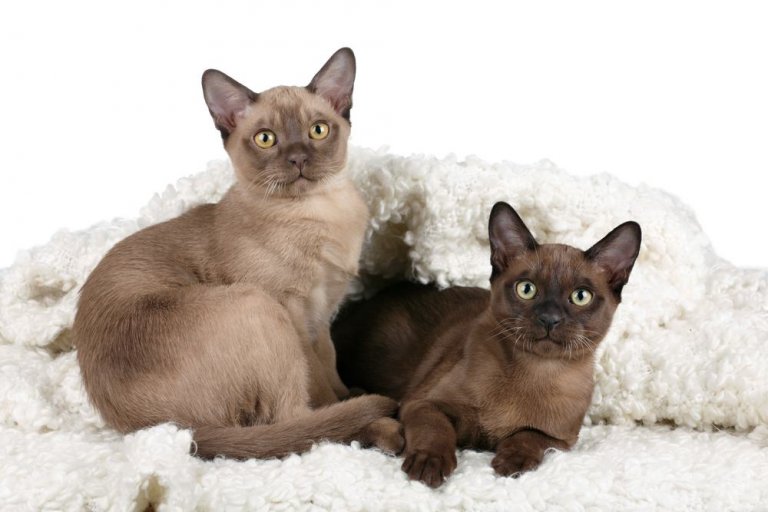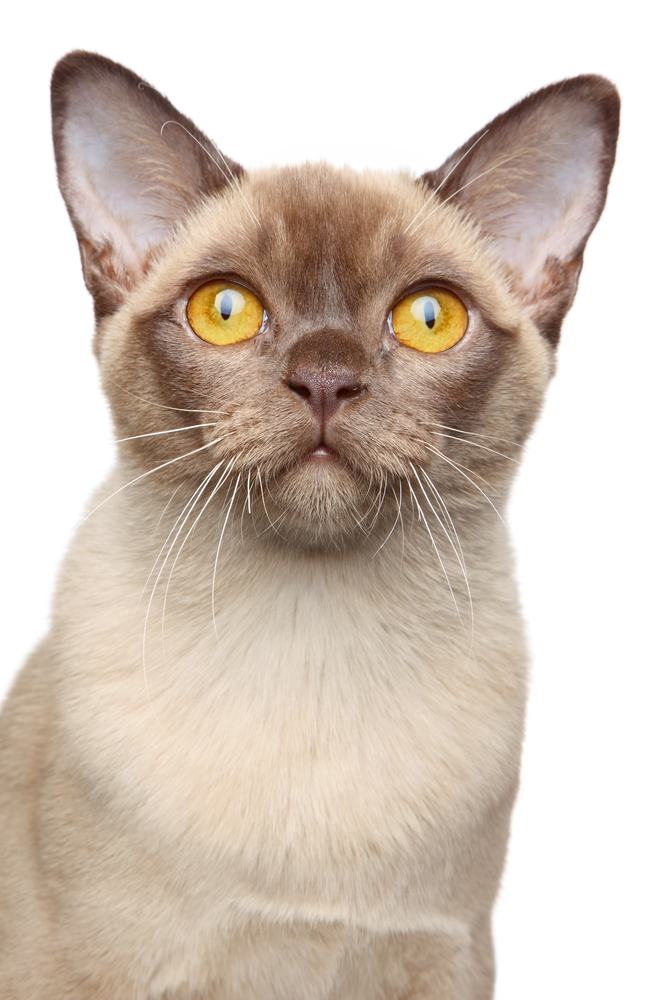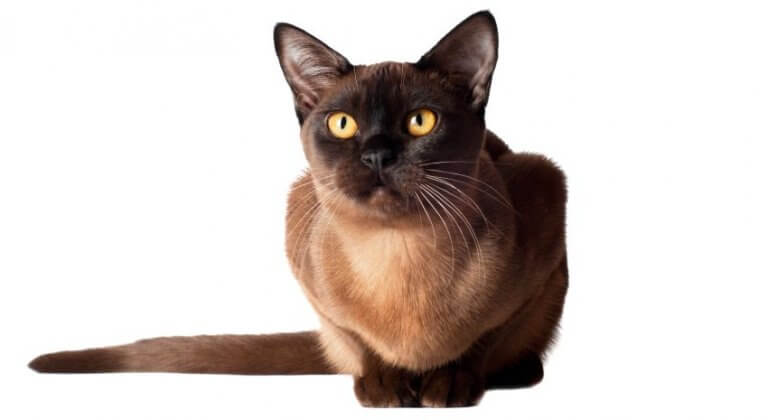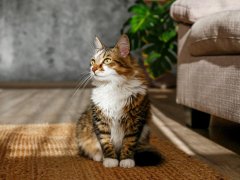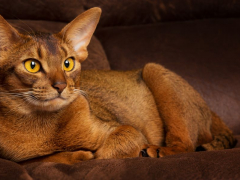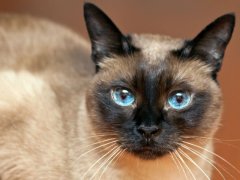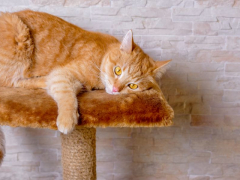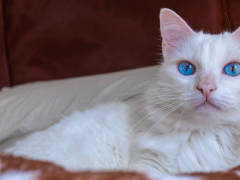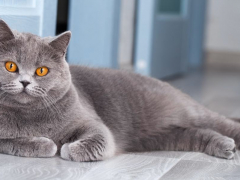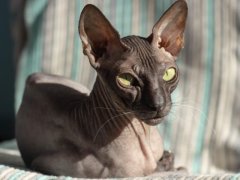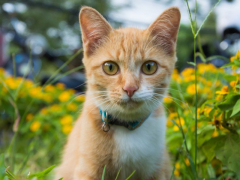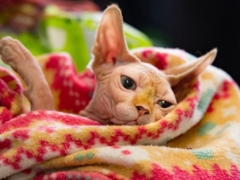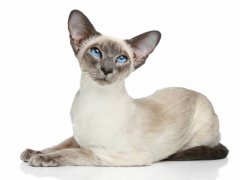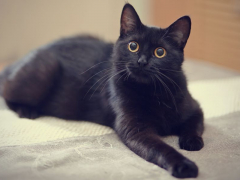Personality and Temperament
Burmese cats are accomplished conversationalists in sleek, soft packages. These gorgeous cats are direct descendants of Siamese cats, which explains their chatty nature. However, their voices are softer and less demanding.
Just like their cousins, Burmese cats are playful, energetic, and highly intelligent. They're extremely sociable and they love to snuggle. In fact, these cats are so affectionate that the National Alliance of Burmese Breeders (NABB) has nicknamed them the "ultimate companion cats."
There are two types of Burmese cats: American and European. The American and European Burmese both trace their roots back to the same beginnings, but they were developed separately early on. Today, they are two separate breeds with different breed standards. The American Burmese, which in the United States is simply referred to as the Burmese, is stockier, with a broader head, a shorter muzzle, and distinct rounded eyes. The European Burmese, also called the British Burmese, has a longer muzzle, a wedge-shaped head, and eyes that are distinctly slanted.
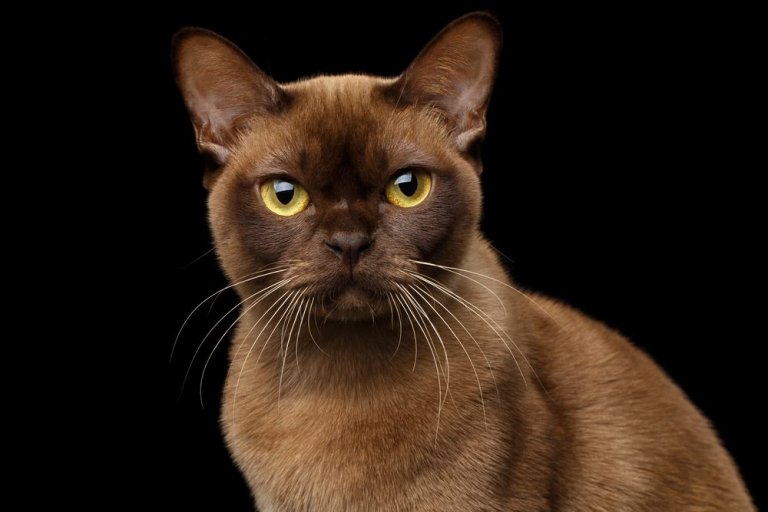
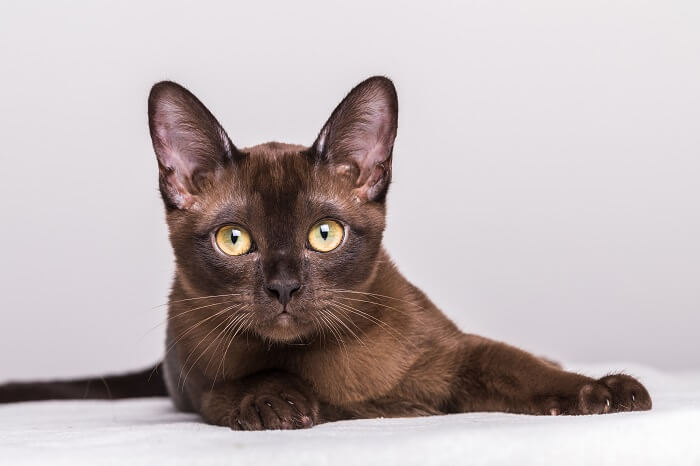
Care
Nutrition
Grooming
Exercise
Health
Burmese cats do not have any special nutritional needs. Like all cats, Burmese do require high-quality cat food with meat as the first ingredient.
Since diabetes and obesity can be a problem for these cats, particularly later in life, it's important to limit their carbohydrate intake.
Thanks to their soft, fine, short coats, Burmese cats do not require much in terms of grooming. A weekly brushing can help remove dead hair, and a quick rub with a chamois can help bring out the shine in their coat.
It’s also a good idea to teach your cat to accept toothbrushing and nail trimming from a young age.
Burmese cats love to play so getting enough exercise isn't usually a problem. These energetic kitties have a reputation for carrying their favorite toys to their family members for fun games of fetch. They love to jump and climb, so you'll want to provide a durable cat tree.
If you want to engage your cat and boost their activity, interactive toys such as laser pointers and teasers are ideal for the job.
The Burmese is generally healthy, however some health issues can affect some members of the breed.
Hypokalemia, or low blood potassium, can occur in some Burmese. The condition is not fatal, but it causes skeletal muscle weakness. Your veterinarian can prescribe a potassium supplement if your cat has hypokalemia.
Some Burmese cats suffer from diabetes. Avoiding high carbohydrate foods and keeping your pet at the correct weight are two preventative actions that can reduce the risk of developing diabetes.
A small percentage of Burmese are born with cranial deformities (congenital frontonasal dysplasia), a condition known as Burmese head defect. Others suffer from glaucoma and some are prone to urinary tract disease and kidney stones. Burmese cats are also prone to feline hyperaesthesia syndrome (also called twitchy cat disease).
Genetic tests are available for some of the inherited conditions that affect Burmese, including Burmese head defect and Burmese hypokalemia. Responsible breeders test their adult cats prior to breeding them to avoid passing on known genetic issues.
History
The Burmese cat has an intriguing history. The breed's story begins with a chocolate-colored cat named Wong Mau.
Dr. Joseph Thompson of San Francisco brought Wong Mau home with him after a trip to Burma in 1930. Wong Mau was small with a more compact body than that of the Siamese, with a shorter tail, a rounded head, short muzzle, and round, widely spaced eyes.
Dr. Thompson also noted that the cat had darker brown points that accentuated her sable coat. Curious to see what offspring would look like, he bred her to a Siamese cat. The breeding produced a litter of kittens that included some with the appearance of Siamese cats and others that looked like their mother.
Dr. Thompson then mated Wong Mau to one of her brown kittens. This time, the litter contained three different kitten types: Some looked like Siamese cats, some resembled their mother, and some were dark brown with no points. The sable colored cats without points were ultimately used to create the foundation of the Burmese breed.
Burmese cats were first registered by the Cat Fanciers' Association in 1936, and the breed gained full recognition in 1957. Part of the reason for the delay was that some Burmese breeders were crossing their cats with Siamese —a practice that was ultimately prohibited. The outcrossings resulted in the development of the Tonkinese cat, so it certainly provided some benefits that cat fanciers can appreciate!
Today, CFA recognizes both the American Burmese and European Burmese. All major cat registries recognize Burmese cats, but not all colors are permitted within all registries.
